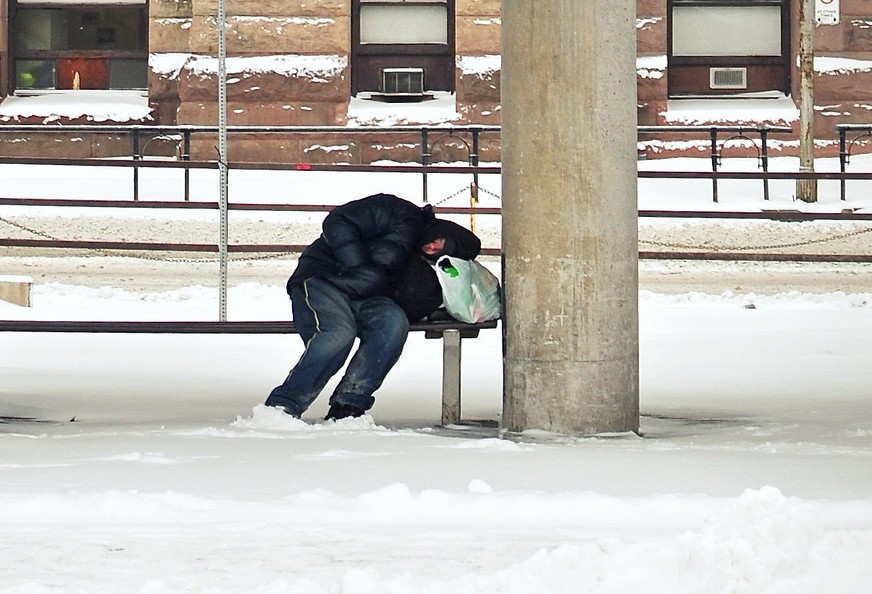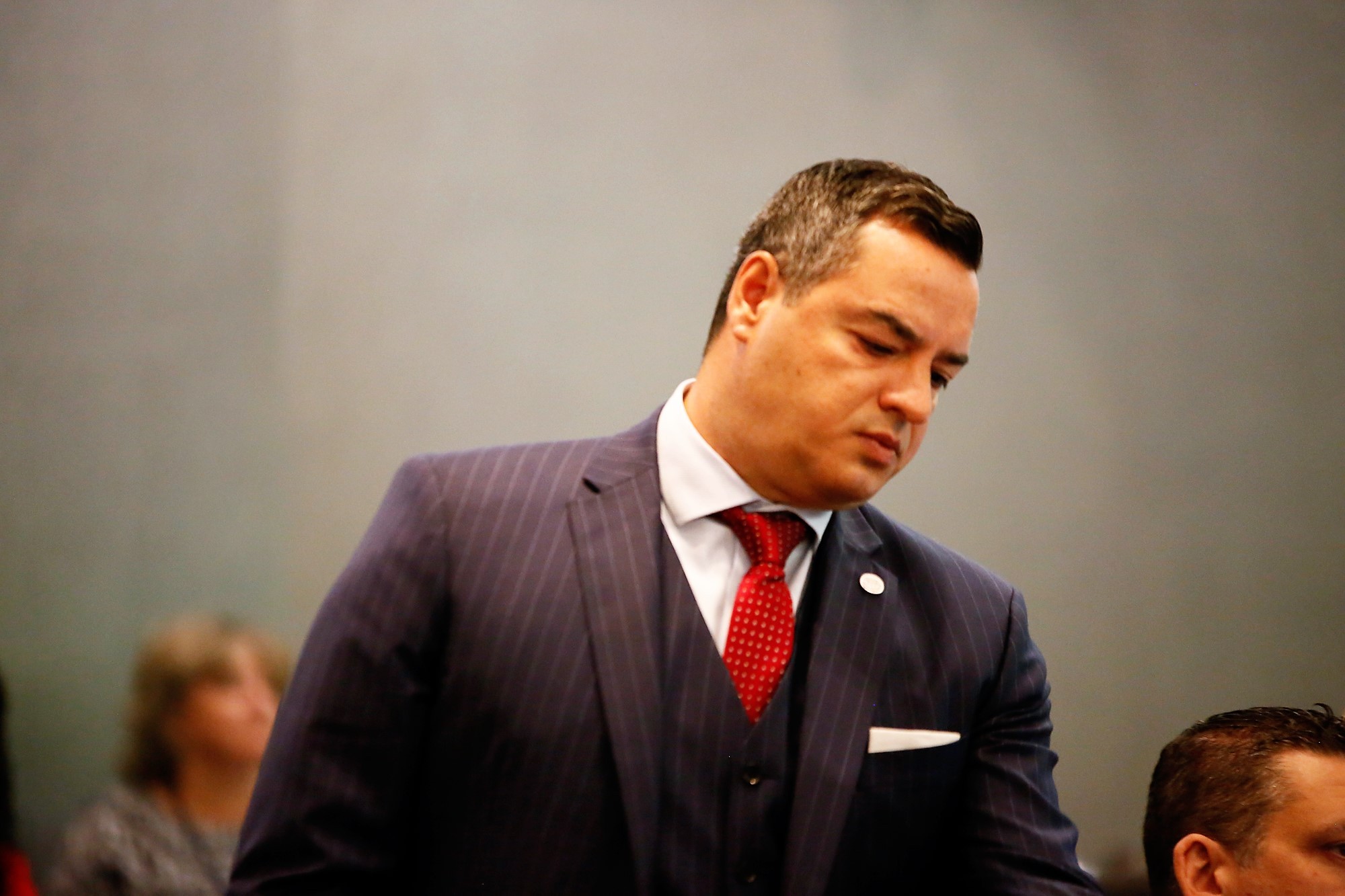
Peel councillor questions if enough is being done to help the homeless
For the homeless in Brampton and across Peel, it’s been a rough start to the year. Southern Ontario already had one cold snap last week and now, after a brief respite, the area is in the midst of another. The dropping temperatures and now a severe snowstorm that pose an inconvenience for most, are much, much more dangerous for the region’s vulnerable population.
In Brampton and Mississauga the woeful lack of city and regional services, which provide a fraction of the emergency shelters that Toronto has, makes the situation for the growing homeless population even worse.

At last Thursday’s Region of Peel Council meeting, Janice Sheehy presented a laundry list of asks so she can more adequately address the dire reality facing more and more people. The commissioner of human services’ requests include additional funding for housing, homelessness, precarious employment, child care supports and community investment to alleviate poverty in the region.
While the 2019 proposed Peel Region budget suggests the disturbing homeless situation is understood, the life or death reality seems to be chronically ignored.
The document, which is more than 300 pages, includes a brief section on homelessness, that states: there is “growing demand on (the) shelter system due to increased chronic and episodic homelessness”; there are “increasing lengths of stays in shelters due to (a) shortage of affordable housing”; there is a “need for a permanent solution for the temporary youth shelter in Brampton”; there are “gaps in safe, dedicated housing options, and specialized programming for victims of human sex trafficking”. The budget document also states that pressures on supports for the homeless arise because of “uncertainty in provincial funding allocation.”
The proposed budget calls for an additional $14 million to build a permanent youth shelter in Brampton, but it’s not clear if that would include additional shelter space or if a new youth shelter would simply replace the temporary one being used now.
No additional staff for the existing shelters are being requested and the proposed operating budget actually suggests $1.3 million less will have to be spent, due to the loss of provincial funding for a homelessness prevention initiative. It’s unclear if there will be any implications for the 21 staff at the region’s shelters. It’s proposed that staffing levels for the region’s five shelters remain the same in 2019.
“As you (regional councillors) are aware, there is a growing need in our community for emergency, transitional, affordable and middle income housing due to population growth, the aging population, precarious employment, the rising cost of housing and low vacancy rates in the private rental market,” Sheehy told council last week, addressing the bleak situation of those facing homelessness.
Regional Councillor George Carlson praised Sheehy and the work she and her staff have done, but still called the budget and the region’s previous efforts to mitigate homelessness “skinny.”

Regional Councillor George Carlson wonders how the homeless will cope with Monday's blizzard.
“Those are the kinds of things that we have to become better at because there is never going to be a time when we’ve got an extra $20 million sitting around,” Carlson told The Pointer Monday, as a blizzard began blanketing the region.
The issue of homelessness is near and dear to Carlson’s heart. He mentioned that he temporarily housed a homeless person in his garage and is currently allowing another to live near his property in a tent.
The Pointer spoke to both of Brampton’s shelters on Monday around lunch time and they said they had less than a handful of spaces available. Staff cautioned that the situation is always changing and they expected the few spaces they did have to fill up by the end of the day.
Brampton has a total of 150 beds between both shelters — The Wilkinson Shelter near Tomken Road and Steeles Avenue and Brampton Queen Street East Youth Shelter. It’s a dangerously low number of beds serving a city with a population of about 600,000 people. That’s compared to more than 7,000 emergency shelter spaces in Toronto. According to the region’s own statistics, there were 13,519 visits to Peel’s shelters in 2018 — including all three of Mississauga’s emergency facilities.
The region also provided emergency shelter to 1,310 youths and more than 600 individuals were assisted through transitional housing last year. The numbers provide a snapshot of the burden placed on such few shelters, creating a dire need for additional spaces.
The Pointer received more than a dozen comments from readers last week who expressed shock at the lack of shelter spaces in Brampton.
But while the 2019 regional budget includes another significant increase requested by Peel police — 5.4 percent — almost three times the rate of inflation, with more than 90 percent of the proposed $423 million police budget going to salaries and benefits for employees, homelessness is sure to become an even greater problem that continues to be ignored by regional staff and politicians.
The Pointer asked the Region of Peel if it is doing enough to address the growing problem of homelessness. “The Region continues to invest significantly in services to address emergency housing needs and prevent homelessness. Peel’s operating budget for homelessness services in 2018 was $13.1 million,” Region of Peel spokesperson David Hodkin responded, via email. What he didn’t mention is that, while the problem gets worse, the $13.1 million spent for operating costs for homelessness services in 2018, will be cut by $1.3 million, according to staff’s proposed 2019 budget.
Peel Region’s own Home For All 2018 to 2028 plan to address homelessness and affordable housing cites a 26.9 percent increase in shelter use, which is supported by statements in the 2019 budget document that also indicate the situation is growing increasingly dire. Meanwhile, little is being done about it.
“Occupancy in the shelter system has been relatively the same in the past couple of years: there were 13,519 visits to our shelters between January and September 2018,” Hodkin stated, contradicting the region’s own statistics, while failing to provide any numbers to compare the figure to.
Peel Region has had a comprehensive housing strategy in place since 2013, which was then renewed in 2018. The new Home For All plan sets out some targets the region hopes to meet by 2028. These include 7,500 new units annually, which breaks down as 2,000 affordable housing units for middle and low income earners and 5,500 market-priced units for middle and higher earners. It’s unclear how the region proposes to meet its own targets and where the funding will come from.
The plan cites some gloomy numbers as its reason for the goals it has set out. “The largest gap exists for low-income households or households that earn $59,156 per year or less. Seventy percent of these households (just over 90,000 households in Peel) are living in housing that is not affordable, i.e., housing that costs less than 30 percent of their income. A relatively smaller gap exists for middle income households. Twenty-nine percent of these households, defined as households that earn $59,156 - $106,002 per year, are living in housing that is not affordable. The existing supply of supportive housing meets just 50 percent of the demand for this housing type,” the plan reads.

Brampton Regional Councillor Martin Medeiros
Brampton Regional Councillor Martin Medeiros has a working knowledge of how the funding for the region’s homelessness plan is broken down. “The Region currently receives funding from the federal and provincial governments. For all housing and homelessness services in Peel, just under half of funding is from the province, just under half is from the Region, and additional funding from the federal government. The Region continues to advocate to the province and federal government for long term sustainable funding for housing and homelessness services,” Medeiros told The Pointer in an emailed statement.
Medeiros also provided a list of things he will be bringing to the table to help alleviate homelessness and the affordable housing gap in Peel, which has one of the longest wait times in Ontario for affordable housing.
Medeiros said he intends to advocate for “ongoing investments” in the following initiatives:
• Shelters and homelessness prevention services.
• A permanent youth shelter in Brampton, with a centralized location to make access easy for those in need.
• Continuing the Home for Good program, new in 2018 and already successful in placing highly vulnerable chronically homeless individuals in permanent housing.
• Continued homelessness prevention services; the Preventing Homelessness in Peel Program that provides rent or assistance with bills to help people avoid eviction and keep their housing.
Carlson, a Mississauga councillor, takes issue with the lack of shelters in the region and the fact that the five in operation are all in relatively remote areas and hard to access.
“West of Highway 10, which is a pretty big area of Mississauga, we don’t have a homeless shelter. At least not an official one,” Carlson says.
“That is an obvious gap and what brought it home to me this week, or last week, were all the radio announcements from Toronto of where to go, when you’ve got nowhere else to go. We don’t have any system that sophisticated in Peel.”
Email: [email protected]
Twitter: @mansoortanweer
Submit a correction about this story


